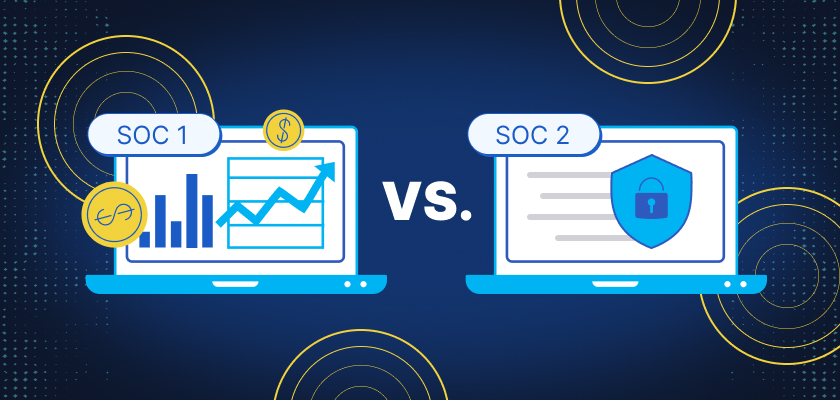
SOC 1 vs SOC 2: Understanding the Key Differences
SOC 1 and SOC 2 reports are both issued under the AICPA’s System and Organization Controls (SOC) framework, but they serve very different purposes. SOC 1 focuses on financial reporting, while SOC 2 addresses information security and data privacy.
Choosing the right report depends on your service offering and your clients’ expectations. Delivering payroll services and handling billing systems may require SOC 1. Managing customer data or delivering a SaaS platform may call for SOC 2. In some cases, your organization may need both.
What Is SOC 1?
SOC 1 reports are designed for service organizations whose systems impact their clients’ financial reporting. These reports evaluate Internal Controls over Financial Reporting (ICFR) and are often requested during client financial audits.
Use cases include:
- Payroll processors
- Billing and invoicing platforms
- Financial transaction systems
- SaaS platforms integrated with general ledger data
SOC 1 reports are governed by SSAE 18 and issued by an independent CPA.
What Is SOC 2?
SOC 2 applies to service providers that manage, store, or transmit customer data. It evaluates an organization’s ability to implement and maintain controls aligned with the AICPA’s Trust Services Criteria, covering:
- Security
- Availability
- Processing Integrity
- Confidentiality
- Privacy
SOC 2 is typically requested by customers and partners seeking assurance around your cybersecurity posture. Common among:
- SaaS companies
- Cloud platforms
- Managed IT services
- Technology vendors
SOC 1 vs SOC 2: What’s the Difference?
| Feature | SOC 1 | SOC 2 |
| Primary Focus | Financial reporting controls (ICFR) | Security and data privacy controls |
| Standard Used | SSAE 18 | AICPA Trust Services Criteria |
| Audience | Auditors, controllers, finance teams | Clients, partners, procurement, security teams |
| Use Case | Payroll, billing, transaction systems | SaaS, cloud services, IT vendors |
| Report Type | Type I or Type II | Type I or Type II |
| Public Disclosure | Private | Private (unless issuing a SOC 3 summary) |
Choosing Between SOC 1 and SOC 2
To determine the right report for your organization, start with your clients’ expectations and your service model.
- If your service affects financial reporting, such as invoicing or general ledger entries → SOC 1
- If your service involves data handling, security, or infrastructure → SOC 2
- If you do both, such as a financial SaaS platform managing transactions and storing customer data, you may need both reports
SOC 1 vs SOC 2 FAQs
Yes. If your services span both financial and security control domains, clients may require both reports.
SOC 1 is common in payroll, fintech, and accounting platforms. SOC 2 is used across SaaS, cloud, IT, and managed service providers.
They serve different purposes. SOC 2 evaluates security controls, while SOC 1 focuses on financial reporting accuracy.
They build trust. SOC 1 helps auditors validate financials. SOC 2 reassures clients that their data is secure and handled properly.
No, but they are often required contractually by clients or partners during procurement and vendor risk assessments.